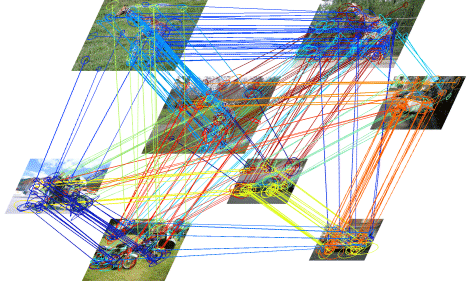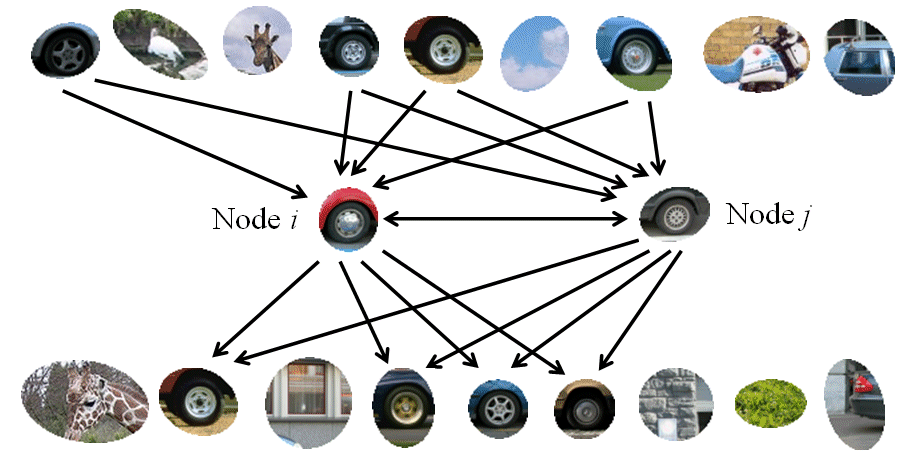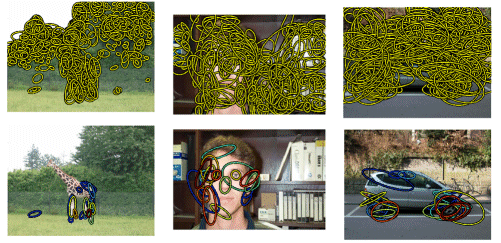Unsupervised Modeling of Object Categories Using Link Analysis Techniques
People
Publication
Gunhee Kim, Christos Faloutsos and Martial Hebert
Unsupervised Modeling of Object Categories Using Link Analysis Techniques
IEEE Conference on Computer Vision and Pattern Recognition (CVPR 2008), Alaska, USA, June 24-26, 2008. (Oral) (Acceptance = 62/1593~ 3.9%)
[Paper(PDF)] [Presentation(PPT)]
Matlab code
If you want to test my code (written in MATLAB), please email me.
Description
This paper proposes a novel unsupervised modeling of object categories in which (1) we first build a large-scale network that captures the interactions of all visual features across the image set, and (2) analyze the statistics of the link structure. Given a set of unlabelled images with a single number K, the number of object classes to be classified, our approach solves the following two subtasks: (1) Category discovery: clusters the input images into K groups according to object categories. (2) Localization: detects the most probable regions of the object in each classified image.
First our approach represents visual features in the form of a large-scale network (Fig.1.(a)). Then, the unsupervised classification and localization is formulated as the problem of finding hubs and communities in the network. The communities map to object categories and their hubs correspond to class-representative features. Two link analysis techniques are applied to mine those two types of information: (1) PageRank for ranking the relative importance of visual features, (2) Blondel et al's vertex similarity algorithm for structural similarity (Fig.1.(b)).
For category discovery, we observed that our approach achieved competitive performance against most of previous work. For localization, our approach fairly well discovered class representative features as hubs and suppressed the trivial information as background (See Fig.2).
  |
 |
Funding
Intelligent Robotics Development Program, a 21st Century Frontier R&D Programs by the Ministry of Commerce, Industry, and Energy of Korea.